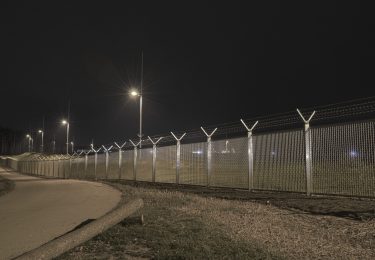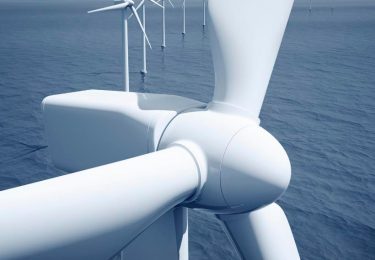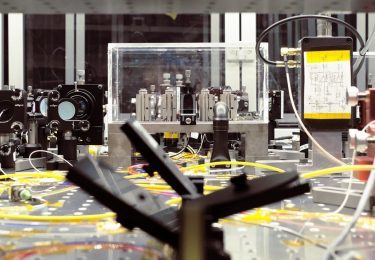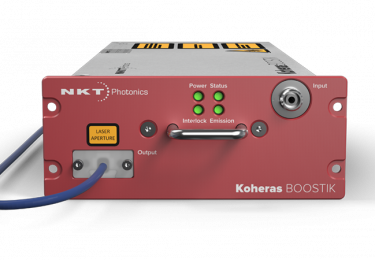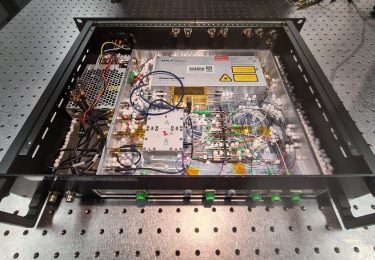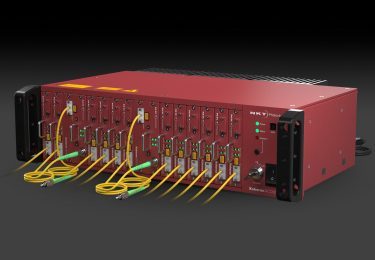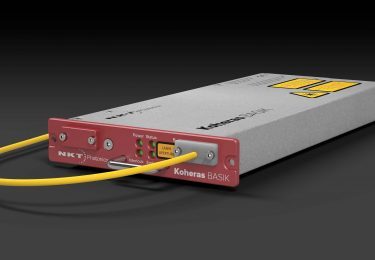Koheras MIKRO – single-frequency OEM lasers
The Koheras MIKRO is the smallest industrial single-frequency DFB fiber laser on the market. The laser design ensures an inherent and robust single-frequency operation without any mode-hops. And the low phase noise and narrow linewidth make it ideal for OEM integration in industrial sensing systems.
With thousands of lasers installed in industrial sensing systems worldwide, the Koheras MIKRO sets the standard for performance and reliability.
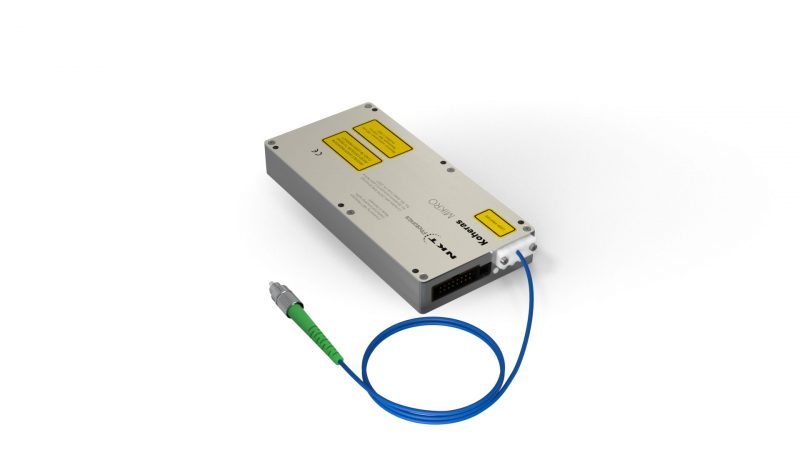
Key Features
Compact OEM footprint
Robust single frequency operation
Low phase noise and narrow linewidth
High wavelength stability
PM and fast frequency tuning option
The standard wavelength is 1550 nm and the MIKRO is available with output wavelength anywhere in the 1535 to 1580 nm range. The laser offers a wide thermal wavelength tuning range and can be combined with fast wavelength modulation e.g. for external stabilization.
The lasers are available with PM (Polarization-Maintaining) or non-PM output.
For easy control, the MIKRO is available with an optional USB interface kit and can be controlled via our user-friendly CONTROL graphical user interface.
Want more details?
If you want more details about phase noise, spectral linewidth, frequency stability, or how to wavelength tune your Koheras laser, we have some application notes for you.
Laser phase noise is a frequency-domain view of the noise spectrum around the laser signal. Read more about phase noise in single-frequency lasers.
Spectral linewidth is a measure of the spectral content of the laser light. Read more about linewidth measurement methods.
The laser’s frequency stability is often described in terms of its spectral linewidth. However, this term lacks detail about the laser frequency noise which is often critical in laser applications. Read the analysis of the laser frequency stability using beat-note measurement.
The wavelength of the laser is controlled by the temperature and strain of the DFB cavity. Learn how to tune your Koheras laser.

Specifications
tuning range3)
modulation range
1) 120 µs integration time.
2) >47 dB (typ. > 52 dB) for non-PM version.
3) Relative to center wavelength at room temperature. If the laser is operated in very cold or hot environments, this wavelength range is truncated on either the upper or lower side.





